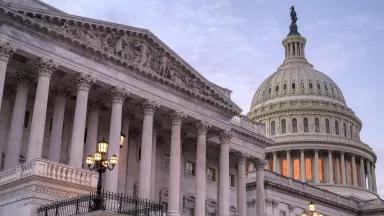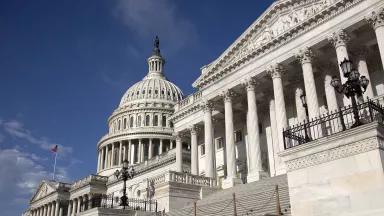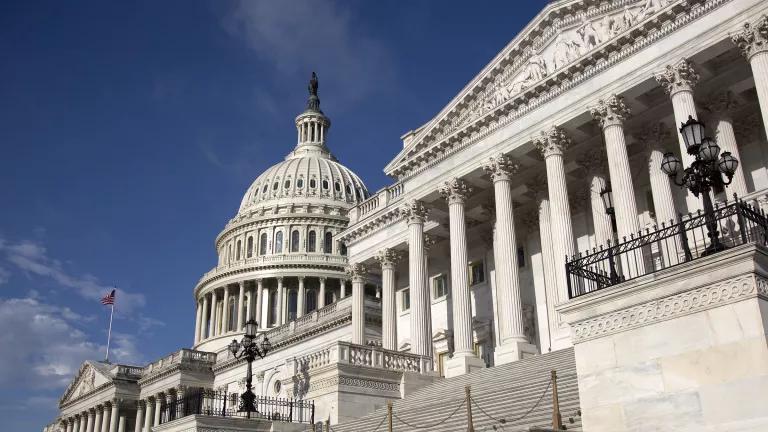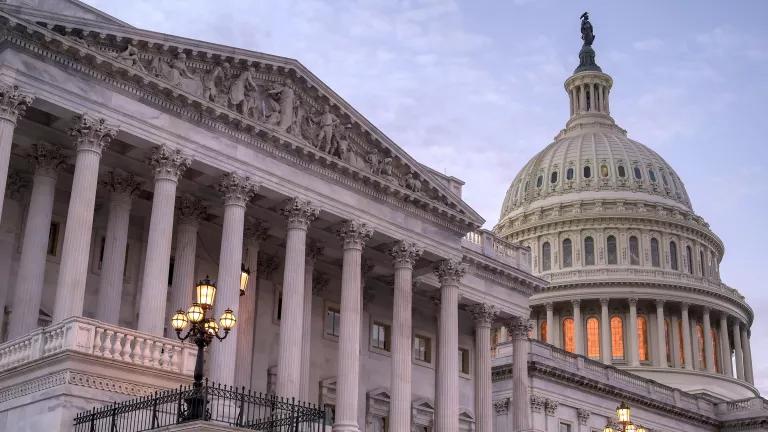Funding the Government for FY2024, Part 1: The State of Play
In part 1, I summarize the overarching state of the federal appropriations process right now.
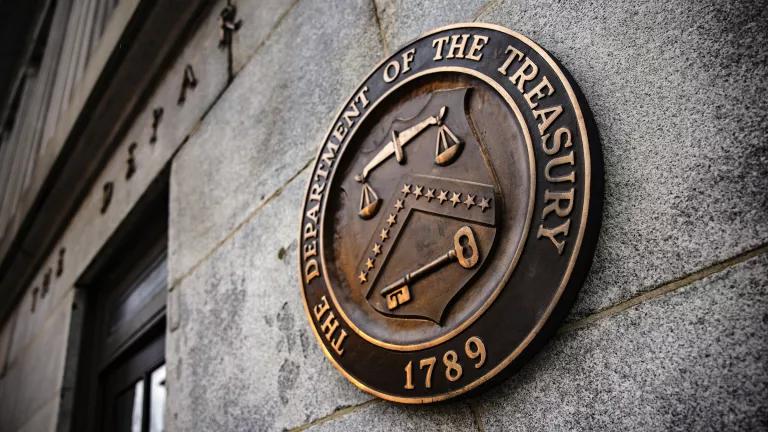
Samuel Corum/Bloomberg via Getty Images
It’s time for my annual accounting of how the federal appropriations process is playing out. The short answer: One house of Congress is doing the work…while the other is falling flat on its face. This does not bode well for keeping the federal government’s lights on, but there still is hope that disaster can be averted.
Note that this blog has three parts. Part 1, where I summarize the overarching state of play in the government funding space, is below. I then take a look at the shoddy work of the House of Representatives in part 2. I close out by examining the more respectable work of the Senate before discussing potential next steps in part 3.
It’s August, a time when Washington, D.C., slows to a crawl as the president and vice president lighten their schedules, members of Congress return to their districts to campaign and fundraise, and Hill staff—who comprise the real engine that drives our legislative process—retreat from the blistering heat in our nation’s capital to recoup sleep, question their life choices, and assess where things stand before returning to the inevitable whirlwind of activity prior to the fiscal year closing out, as it does every September 30. This year, a particularly powerful storm of essential legislation looms, and the annual appropriations bills represent that storm’s leading front.
As I’ve detailed in expert blogs past, the annual appropriations bills are the 12 bills that must become law in order for our federal government to be fully funded. Absent those bills’ enactment, the government (mostly) shuts down, which does great harm to our economy and denies the provision of various essential services that we otherwise take for granted. Unfortunately, due to these bills’ must-pass nature, they are increasingly used for political games-playing, and are often held hostage as a vocal minority seeks to use the appropriations process to assert its will on the American people. This year is no different in that respect—though it is, in many respects, more dire.
What makes this year so challenging? How will those challenges manifest themselves? And what is likely to play out this fall as all of this comes to a head? These are all questions that I attempt to answer in this three-part blog. So, hold onto your hats as I: (1) summarize the overarching state of play here in part 1; (2) take a look at the House of Representatives’ sorry attempt to tackle its government funding responsibilities in part 2; and (3) examine the far steadier work of the Senate, before hazarding a guess at what will come next in part 3.
Without further ado…
Why Is Funding the Government So Difficult This Year?
Though the modern-day appropriations process often culminates in a manufactured crisis, this year, it managed to begin in that mode. This past spring, a periodic ritual of national self-sabotage came to a head: the country’s debt limit had to be addressed.
The debt limit “crisis”
I addressed this crisis in detail in another blog, but the short version of the story is that our country has imposed upon itself, by law, a redundant cap on the assumption of national debt. Think of that cap like an amped-up version of the limit on your credit card; the U.S. Department of the Treasury is authorized pay off debt to that amount—and no more. Imagine surpassing your credit limit, and then being barred from making payments! You’d be in a real fix. Similarly, if the country hits this cap and is unable to satisfy its obligations, the global financial system starts to collapse, and chaos ensues.
I call the debt limit “redundant” because, as readers of this blog surely are aware, Congress already controls our spending via the appropriations process. Thus, it can simply use its constitutional power of the purse to curtail deficit spending, thereby reducing (or, at least, curbing) our national debt. Even setting aside its control over spending, Congress can also rein in our debt through any number of other exertions of its broad legislative powers—e.g., by raising revenue through fairer taxation of corporations and the super-wealthy—in a deliberate, responsible manner. Instead, Congress has elected to impose a capricious debt limit upon itself, and that limit hangs over our nation’s financial future like the sword of Damocles, threatening to fall every few years and mortally wound the country’s (and the world’s) economy.
To be sure, we all can agree that the accumulation of too much debt is a bad thing—but we also must acknowledge that the responsible assumption of debt is a key element of growth. Think of your own finances. How else would you buy, say, a car or a house? If you’re just shelling out cash for all your major life purchases, nice! More power to you. Most of us, however, need to borrow responsibly to better our circumstances. A nation’s finances are no different in that regard, and by erratically capping the amount of debt the country can assume, the debt limit creates uncertainty around our ability to achieve continued growth and generates global financial unease. Now, if our debt limit were calibrated to some kind of logical, well-calculated number that truly represented the amount of debt that the United States could responsibly assume, then maybe you’d be able to justify its existence. But the debt limit is a nonsense number, generated on the fly every couple of years by legislators in crisis. All the debt limit does in the real world—aside from causing fiscal pandemonium—is create a legislative leverage point at which irresponsible members of Congress can attempt to advance their pet priorities while holding the world’s financial system hostage. It is all profoundly stupid.
The ransom for suspending the debt limit in 2023
Sadly, the debt limit’s approach in the spring of 2023 created just such a leverage point, and the House’s majority did their best to take advantage. In exchange for a suspension of the debt limit through 2024, they insisted, at the world’s economic peril, upon arbitrary spending caps that would hinder the ability of the appropriators to properly fund many of the federal government’s vital programs, including in the environmental sector. After much negotiation, somewhat moderated (but still terrible) versions of these caps were enacted into law; they will apply with full force for fiscal years 2024 and 2025 (FY2024 and FY2025, respectively). These caps are not as bad as they could have been, but they still fund the government at near-starvation levels.
In addition to the caps, negotiators, desperate to avoid a national default, allowed the House majority to include a draconian “incentive” for Congress to complete the FY2024 appropriations process: The debt limit law provided that, if all 12 of the annual appropriations bills were not enacted by the end of the calendar year, and a continuing resolution (or “CR,” which simply carries on spending levels from the prior fiscal year) were enacted in the stead of any of those bills, then a sequestration (effectively an automatic, across-the-board cut) of 1 percent would be applied across all of the federal government in April 2024. Such a cut would be catastrophic. The spending caps set out in the debt limit law are already too low, so cutting from those amounts (or from the flat funding levels of a CR) would gut the federal government’s ability to defend our nation, safeguard our health, and protect our planet.
What’s more, hastily inserted policy items wholly unrelated to the national debt were included in the debt limit package, including a disastrous approval of the Mountain Valley Pipeline and significant amendments to our environmental permitting laws. I will leave it to those more expert in such areas to comment on these non sequitur policy pieces; suffice it to say that throwing major policy items into must-pass bills to mollify unreasonable actors is no way to legislate.
Where Does That Leave Us, and Where Are We Going?
We are in a bad place. With the debt limit law’s foolhardy spending caps in place, the prospect of 1 percent sequestration looming, and none of the 12 annual appropriations bills signed into law as I write this, we are careening toward a government shutdown, possibly as soon as midnight on September 30. Only hard-nosed, serious-minded, bipartisan legislating can keep the government’s lights on and mitigate the harms certain to ensue in the wake of the debt limit law and its attendant horrors. Unfortunately, only one of our two houses of Congress recognizes this and has done the hard work to put forward appropriations bills that would make the best of the bad situation we find ourselves in.
Spoiler alert: It wasn’t the House of Representatives, which is presently suffering from a level of dysfunction not seen since the 19th century. Let’s check in there first before turning to the soberer work undertaken by the Senate, if for no other reason than to get it out of the way.
For my examination of what has transpired in the House, see part 2.



